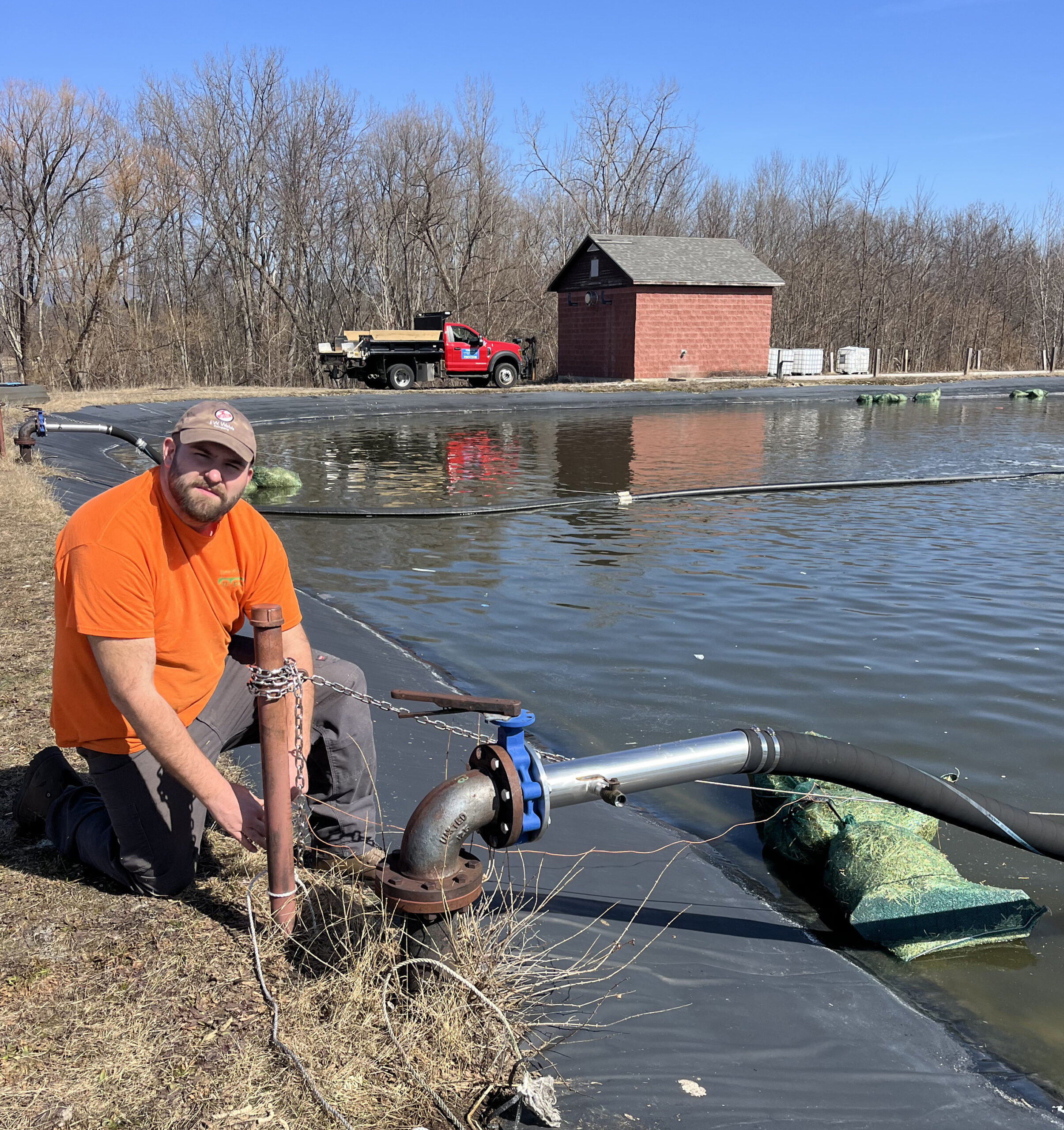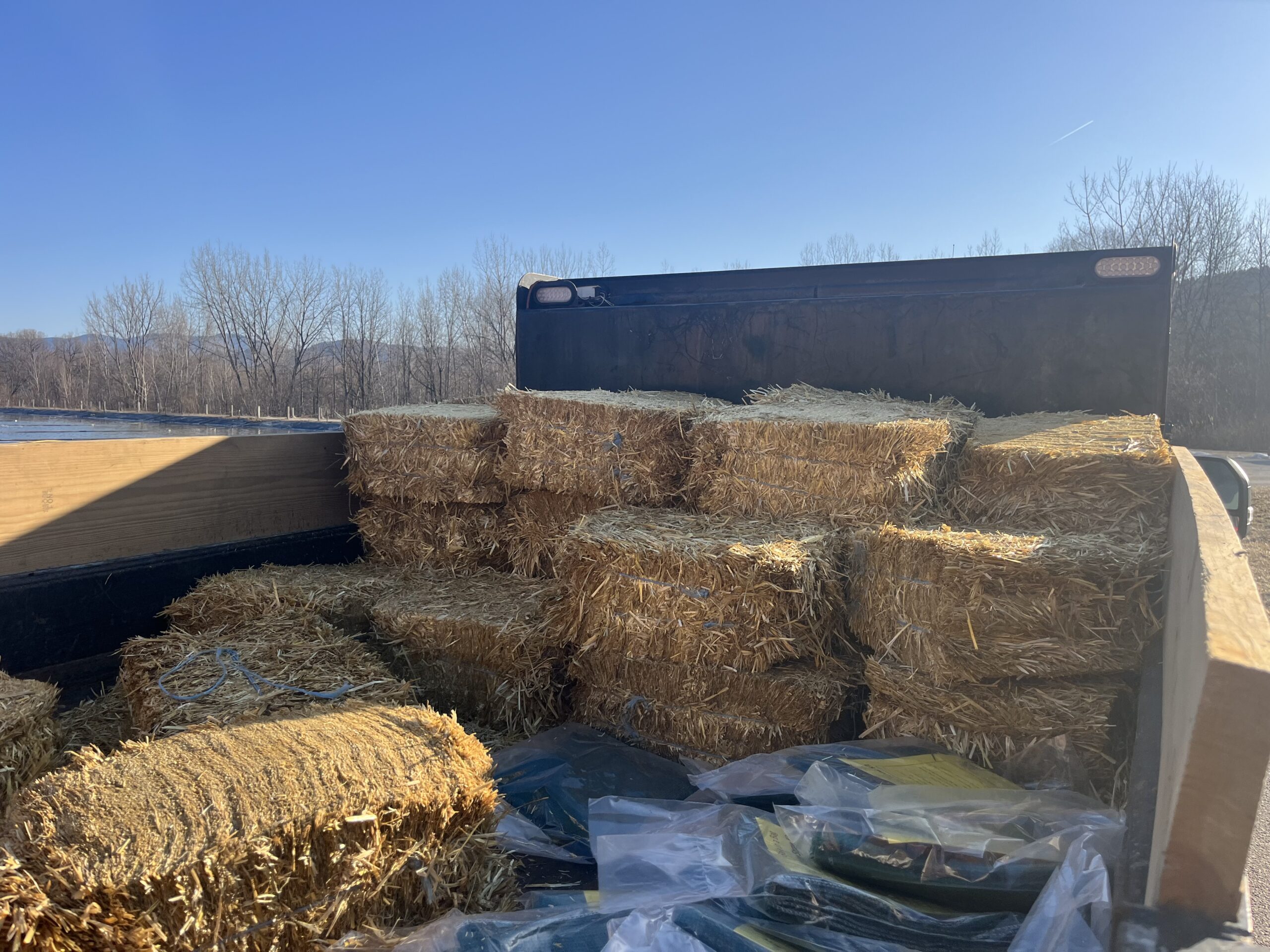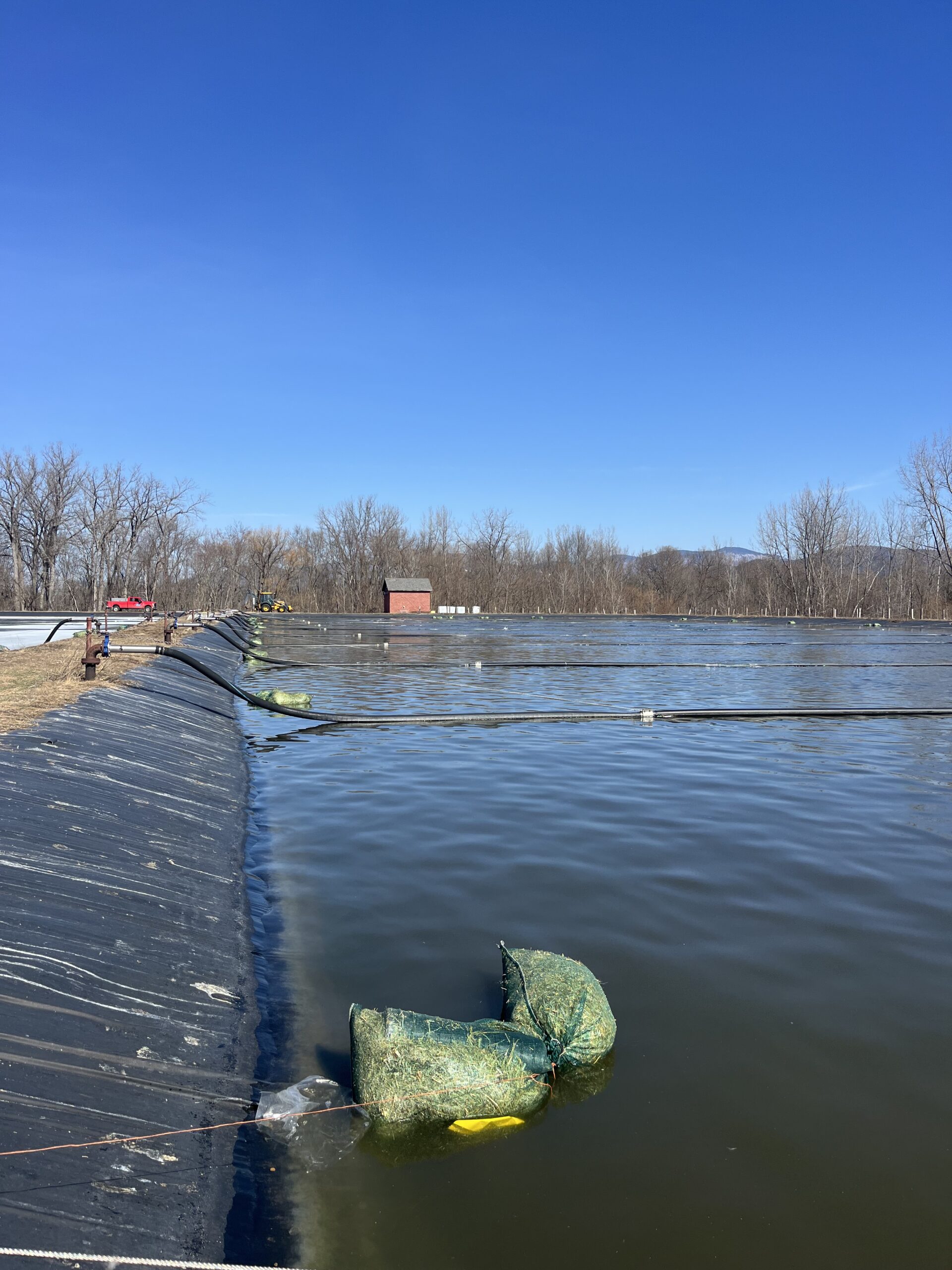by Elijah Lemieux
This article was published in the summer 2025 issue of our newsletter.
Algae can be a problem in lagoons at wastewater treatment facilities, and some facilities have more algae issues than others. What’s the problem with algae, you ask? When concentrations get too high, some of the algae leaves the facility as solids—and we all know that solids in wastewater effluent are far from desirable.
The Proctor Wastewater Treatment Plant has historically had such a bad algae problem that they have incurred permit violations for Total Suspended Solids (TSS) nearly every year due to the algae. For as long as anyone can remember, operators would reluctantly use a copper-based algaecide when the algae would get out of control.
In 2023, the town’s wastewater staff started looking for a better, more ecologically sound alternative. That’s when they learned about barley straw as a method to control algae growth.

Nick Geneva at the Proctor Wastewater Treatment Plant.
Here’s what Operation of Wastewater Treatment Plants (Volume 1, Eighth Edition) from the Office of Water Programs/Sacramento State has to say about using barley straw to control algae in lagoons:
“The basic strategy is to place loosened bales of barley (not wheat) straw into the water. As it decomposes, unicellular algae numbers decline… Currently, it is thought that the decomposition of the straw by fungi produces phenolic compounds that convert to peroxides in the presence of sunlight. The peroxides stop the growth of algae, as opposed to killing it… Recommended rates vary from about 90 to 900 pounds per acre. (Application rates are based on area rather than volume because algae grow generally near the water surface)… A typical application rate is about 225 pounds per acre… This is a slow process. Results may not be apparent for 6 to 8 weeks.”
Locating a large enough quantity of affordable barley straw wasn’t easy. The operators were able to talk their local Agway into ordering it for them. In March 2024, they purchased 900 pounds of the barley straw for around $1,200.

Barley straw delivery.
The barley straw bales, which are sold for use in small ponds, came with three mesh bags per bale for the straw to be divided into. The operators spent a beautiful spring morning opening bales and fluffing the straw as they portioned the barley out into the mesh bags. By lunchtime they had set around 90 bags afloat in the two 1.87-acre lagoons, for an application rate of roughly 240 pounds per acre.
The result? For the first time in recent memory, they didn’t need to use copper-based algaecide in 2024.

Bags of barley straw floating in one of Proctor’s lagoons.
Chief operator Nice Geneva said, “Barley straw has been surprisingly effective at combating the algal growth at the Proctor Wastewater Facility. It has done wonders limiting new growth in lagoons that were jammed with algae.”
The floating bags of rotted barley straw were removed in late fall. This March, they put another 900 pounds into the lagoons.
The Proctor crew has found this solution to algae overgrowth to be cost effective and easy to manage with low maintenance requirements. The wastewater operators are optimistic about the continued use of barley straw and intend to rely on it for algae control as they explore additional long-term solutions.

